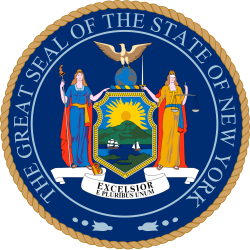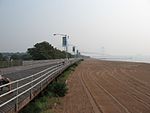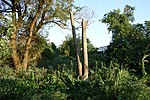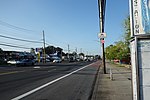South Beach–Franklin Delano Roosevelt Boardwalk

The South Beach–Franklin Delano Roosevelt Boardwalk, alternately referred to as the FDR Boardwalk or the South Beach Boardwalk, is a boardwalk facing the Lower New York Bay on the East Shore of Staten Island, one of the five boroughs of New York City. The boardwalk is the main feature of a public park that stretches from Fort Wadsworth and the Verrazzano-Narrows Bridge to Miller Field, both part of the Gateway National Recreation Area. The park also contains numerous recreational facilities, including a skate park. Originally, the Staten Island shorefront was occupied by multiple amusement parks, which had closed by the 1930s. Construction on the boardwalk started in 1935 and was complete by 1937. Amusements continued to occupy the boardwalk until the late 1950s, when water pollution and other changes started to repel potential visitors. The boardwalk was restored under a multi-million dollar project in the late 1990s. However, it is still relatively lightly used: in 2017, South Beach and Boardwalk saw 334,000 visitors, about 5% of the visitor count at Coney Island.
Excerpt from the Wikipedia article South Beach–Franklin Delano Roosevelt Boardwalk (License: CC BY-SA 3.0, Authors, Images).South Beach–Franklin Delano Roosevelt Boardwalk
Franklin D Roosevelt Boardwalk, New York Staten Island
Geographical coordinates (GPS) Address Nearby Places Show on map
Geographical coordinates (GPS)
| Latitude | Longitude |
|---|---|
| N 40.5797 ° | E -74.0758 ° |
Address
Franklin D Roosevelt Boardwalk
Franklin D Roosevelt Boardwalk
10305 New York, Staten Island
New York, United States
Open on Google Maps









